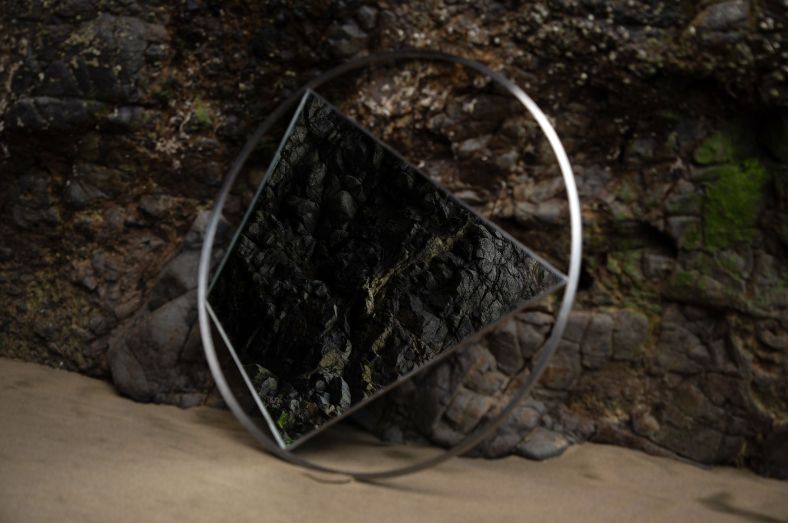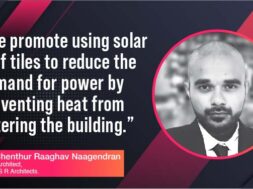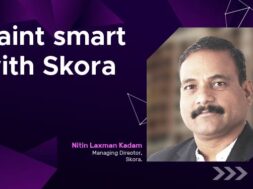
Founder of Mumbai & Auckland based product design studio Farzin Adenwalla opines goals, budget, timeline, consumer are all important parameters for good design and it all begins with a conversation
Good design is human-centric
Good design is human-centric. It is not only focused on the aesthetic aspects but also takes into consideration how user experiences can be improved in our daily lives. Design is a broad field to say the least, however, at its fundamental level all design comes down to asking questions about who the product is for, and whether it fulfills their needs. This can range from asking if a certain color and the material used for a pen feels sturdy or uncomfortable when held in your hand, or if in your opinion a certain size of phone is easier to use and navigate.
I often work on a multidisciplinary basis with people from different specialties from within the design sectors, including industrial designers, engineers’ architects, as well as graphic and fashion designers. The emotional connection is also important- and to me that turns good design into great design. I aim to do that in my work- tell a story under everything I design. When I first get into a project, I search for that connection. Each piece designed has an emotional meaning beyond its simple physical presence.
Conversations make way for great designs
Most of the finest design projects begin with a conversation. Whether it’s one-on-one or in a group, the client and designer need to share the same vision for your project. Asking the right questions are important- What are the goals of this project? Who is your consumer? What is the budget? What is your timeline? Getting on the same page from the beginning helps ensure that everyone will be happy with the final product.

Product design was a natural career move
My interest in design started with architecture. I was always fascinated by the built environment and that’s what led to study design & architecture at university. It was only after I started working in India (after I graduated I came to work for Rahul Mehrotra Architects in Mumbai) and I developed an interest in working at a more detailed level- that’s what veered me towards product and industrial design. As a child I was always building things- so I think it was a natural career move.
The inception of my studio ‘Bombay Atelier’ was a result of relentless experimentation
I always had a lot of ideas and liked to experiment. So the inception of my studio ‘Bombay Atelier’ happened quite naturally, you start to wonder what form things can take if you stepped a little out of your comfort zone. That’s how it started, being young you are also quite fearless and have less responsibility, so it felt like a good idea! The reality is of course very difficult and you learn a lot along the way.

As a designer I’m very interested in the convergence of science and art
My work along the way has evolved, naturally and I feel that creating products with a social and environmental conscience is essential to being a successful designer. Using less material and creating functional and faster products for a larger audience makes me feel like my work is actually making an impact on the world today.
As a designer I’m very interested in the convergence of science and art, and I try to show that in a lot of my work. I think as a designer it’s important to have some kind of personal meaning behind what you’re doing; it makes the whole process much more fulfilling and meaningful. At the moment my design research is focusing on climate change and the environment. I want to communicate through the mode of design and art- it allows more people to get engaged in these topics.
Collaborations are a great way for everyone involved to grow and learn
In many ways, I feel we’re still in an adolescent phase as a design industry and we have a lot of growing to do. Individual designers have the opportunity to bring a fresh perspective, and design companies provide support, resources, and insight that may otherwise not be available to an individual designer. Collaborations are a great way for everyone involved to grow and learn. When manufacturers and designers come together to create design-centric products, they are more likely to succeed and get noticed on a global design level.

Spotlight Project – Turning dessert into design
I recently launched The Kulfi Project, which was a project to raise funds for metal artisans struggling during COVID. I created a limited edition range of side tables together with Bharat Floorings. The second part of the project will be released hopefully sometime this year- where I have collaborated with world famous chefs and restaurants and taken inspiration from their desserts. Turning dessert into design you could say. I try to work on fun collaborations that encompass different disciplines and I feel that’s what puts my work in the spotlight.
Designers need to use sustainable materials in furniture
The biggest change I have seen in design is the sourcing of materials. Not only do we have to be sure that we are using sustainable or recyclable materials, but it is also important to source locally wherever possible. It’s crucial to move towards a circular economy and reduce any negative impact we may have on the environment. There is a high need for designers to use sustainable materials in furniture – and to make sure it’s not disposable, luckily we don’t get a bad name like fast fashion, so it’s important to make good decisions when it comes to materials.
Ongoing Projects
I am working on a new lighting collection and am preparing for an upcoming exhibition at Salone Del Mobile in June. I’m also working towards working as an independent designer for other companies- that allows me to challenge myself and work with others while developing my own body of work.
Cookie Consent
We use cookies to personalize your experience. By continuing to visit this website you agree to our Terms & Conditions, Privacy Policy and Cookie Policy.









